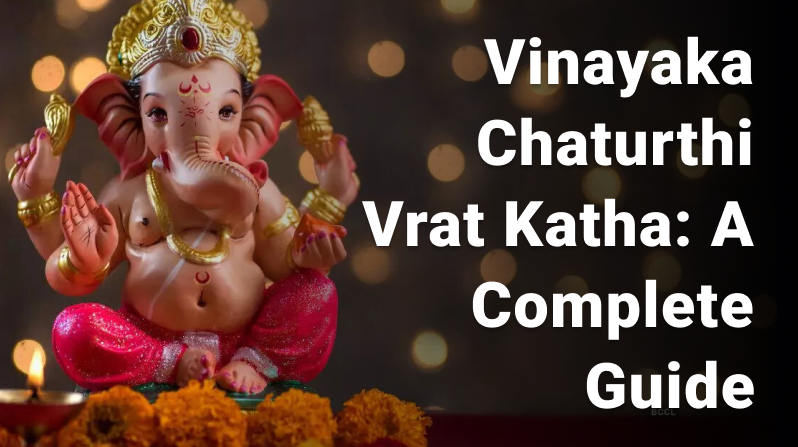
1. Introduction to Vinayaka Chaturthi
Vinayaka Chaturthi, also known as Ganesh Chaturthi, is a Hindu festival celebrated in honor of Lord Ganesha, the elephant-headed deity of wisdom, prosperity, and remover of obstacles. This auspicious day is marked by grand celebrations, fasting, and fervent prayers across India and by Hindu communities worldwide.
2. Significance of Vinayaka Chaturthi
The festival celebrates the birth of Lord Ganesha and is observed on the Chaturthi (fourth day) of the Shukla Paksha (waxing moon phase) in the Hindu month of Bhadrapada (August–September). It symbolizes new beginnings and is considered highly auspicious for undertaking new ventures.
3. When is Vinayaka Chaturthi Celebrated?
Vinayaka Chaturthi usually falls in August or September. In 2025, the festival is expected to be celebrated on August 26th. The exact date may vary based on the lunar calendar and regional customs.
4. Historical Background and Mythology
According to Hindu mythology, Ganesha was created by Goddess Parvati from the sandalwood paste she used for her bath. She gave life to the figure and set him to guard her door. When Lord Shiva, her consort, attempted to enter, Ganesha, not knowing Shiva, stopped him. In a fit of rage, Shiva beheaded him. Upon realizing his mistake, Shiva promised to bring him back to life and replaced his head with that of an elephant, thereby bestowing upon him the title of “Vinayaka” or supreme leader.
5. Vinayaka Chaturthi Vrat Katha (Story)
The vrat katha or sacred story is recited during the puja to explain the origin and significance of the Vrat. A popular legend narrates the tale of a poor woman who diligently observed the Vrat and offered humble offerings to Lord Ganesha. Her devotion pleased Ganesha so much that he blessed her with wealth and prosperity. The story underlines the importance of faith, devotion, and the rewards of observing the Vrat with a pure heart.
Another katha speaks of King Shurasena, who failed to perform the Vrat and faced severe losses and misfortunes. Realizing his mistake, he observed the Vrat with full rituals and regained his kingdom’s prosperity.
6. Rituals and Observances
Cleaning and Decoration: Homes are cleaned and decorated with flowers and rangoli.
Installing the Idol: A clay idol of Ganesha is installed on a decorated platform.
Prayers and Aarti: Devotees perform aarti and chant Ganesha mantras.
Fasting: Observers keep a day-long fast.
Offerings: Special offerings like modaks, laddus, and durva grass are made.
7. How to Perform the Vrat
Wake up early and take a holy bath.
Clean the puja area and install the idol.
Offer flowers, sweets, and chant the Ganapati Atharvasirsha.
Recite the Vinayaka Chaturthi Vrat Katha.
Perform aarti with camphor and distribute prasad.
Break the fast after evening prayers.
8. Prasad and Offerings
Modak: Sweet dumpling considered Ganesha’s favorite.
Laddu: A must-have in every offering.
Durva Grass: Three-blade grass considered sacred.
Red Flowers: Symbolize power and devotion.
9. Regional Variations in Celebrations
Maharashtra: Grand public celebrations with huge idols.
Tamil Nadu: Known as Pillaiyar Chaturthi, focuses on home-based rituals.
Andhra Pradesh and Telangana: Celebrated with colorful pandals and cultural events.
Karnataka: Community feasts and folk performances are common.
10. Do’s and Don’ts During Vinayaka Chaturthi
Do’s:
Maintain cleanliness and purity.
Use eco-friendly idols.
Offer freshly prepared food.
Don’ts:
Avoid non-vegetarian food and alcohol.
Don’t disrespect the idol.
Avoid buying readymade sweets from unhygienic places.
11. Benefits of Observing Vinayaka Chaturthi Vrat
Removal of obstacles in life and work.
Enhanced wisdom and intellect.
Spiritual growth and inner peace.
Prosperity and well-being of the family.
12. Modern-Day Celebrations and Global Reach
Vinayaka Chaturthi is now celebrated globally. Countries like the USA, UK, Australia, and UAE see enthusiastic celebrations in temples and community centers. Technology has enabled virtual pujas, making the festival accessible to the global Hindu diaspora.
13. Environmental Impact and Eco-Friendly Practices
Due to the environmental impact of plaster-of-paris idols, many communities now promote:
Clay idols
Natural colors
Limited immersion in artificial tanks
Recyclable decorations
14. Frequently Asked Questions (FAQ)
Q1: Can non-Hindus observe Vinayaka Chaturthi? Yes, anyone with reverence for the tradition can observe the festival.
Q2: Is it mandatory to fast on Vinayaka Chaturthi? Fasting is optional but recommended for spiritual benefits.
Q3: Can we reuse the Ganesha idol every year? Traditionally, the idol is immersed, but reusable idols are gaining popularity for environmental reasons.
Q4: What if I miss the Chaturthi date? You can still offer prayers and perform the Vrat on the next auspicious day or during the festival period.
Q5: What are some good mantras for Ganesha? Popular mantras include:
Om Gan Ganapataye Namah
Vakratunda Mahakaya
Ganesh Gayatri Mantra
15. Conclusion
Vinayaka Chaturthi Vrat Katha is more than a religious observance; it is a spiritual journey that fosters discipline, devotion, and cultural continuity. With its deep-rooted mythology, meaningful rituals, and growing global presence, this festival continues to unite communities in prayer, joy, and celebration.